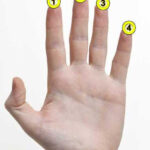Many guitar players, even seasoned ones, might be stringing their guitars incorrectly without realizing the potential harm it can cause. Like many, I used to think “If it sounds good, it’s good,” but at lutherie school, I learned about the hidden damage caused by improper stringing techniques, particularly to the bridge plate. This small piece of wood, typically rosewood or maple, sits beneath the guitar’s bridge inside the body. It’s crucial because it bears the brunt of the strings’ tension, preventing them from tearing through the softer spruce top. Stringing your guitar correctly is not only simple, but it’s also essential for the longevity of your instrument, saving you from potentially costly and avoidable repairs down the line.
The key to correct guitar stringing lies in ensuring the ball ends of the strings are aligned parallel to the guitar’s body and firmly seated against the bridge plate before you bring them up to full tension. A common mistake is using the bridge pins to force the ball ends into place and then relying on string tension to seat them. This incorrect method essentially turns the string windings into a saw, gradually carving grooves into the bridge plate each time you change strings. Similarly, allowing the ball end to sit at an angle, perpendicular to the body, also contributes to wear and tear. If you’ve ever noticed string windings protruding excessively from the bridge, almost touching the saddle, it’s a telltale sign of a worn bridge plate that likely needs professional attention to prevent further damage.
The good news is that by following a few straightforward steps, you can ensure your bridge plate remains in excellent condition for decades. Let’s dive into the correct method to string your guitar, ensuring both optimal sound and instrument health.
Using a small mirror and pin holder for guitar restringing.
To start, it’s helpful to have a few tools ready. While not strictly necessary, a small mirror, like one from an auto parts store, can be invaluable for visually confirming that the string ball ends are seated correctly against the bridge plate. Additionally, creating a simple block with marked holes to organize your bridge pins as you remove them will ensure you put them back in the correct order, though this is less critical for function and more for organization.
Bending the end of a new guitar string to aid in bridge insertion.
Before inserting the string into the bridge, it can be beneficial to put a slight bend in the ball end of the new string. You don’t need to create a sharp kink; just a gentle curve will help to guide the ball end towards the soundhole and align it properly against the bridge plate during insertion. This small pre-bend makes seating the string correctly much easier, especially for beginners.
Correct insertion of a guitar string ball end into the bridge.
Now, insert the ball end of the string into the bridge hole. When inserted correctly, the ball end should curve inwards, towards the guitar’s soundhole, and become mostly hidden from view. This indicates it’s resting against the bridge plate inside the guitar body. Use your fingers to hold the ball end firmly against the bridge plate from the outside. While maintaining this pressure, insert the bridge pin to secure the string. Make sure you are inserting the pins back into the same holes they came from if you are using an organizational method.
Measuring the correct length for a new guitar string before cutting.
Next, you’ll need to cut the string to the correct length before winding it around the tuning peg. An easy method to gauge the right length is to pull the string up to its corresponding tuner on the headstock with your left hand and hold it taut. With your right hand, pinch the string at the 3rd fret. Then, move your right hand down to the 5th fret, allowing a bit of slack to be pulled through your left hand. This extra length provides enough string to wrap around the tuning post. Use wire cutters or string nippers to cut the string at the point held by your left hand. Repeat this process for each string, using the respective tuner as your guide for initial length.
Winding a guitar string onto the tuning peg using a string winder.
When winding the string onto the tuning peg, use a string winder tool to speed up the process. As you turn the tuner, ensure that the string winds neatly downwards, underneath itself on the tuning post. This technique creates a clean and secure string winding, which helps maintain tuning stability and prevents string slippage.
Checking guitar string ball end seating at the bridge.
After inserting each string and before bringing it to full tension, take a moment to re-check that the ball end is correctly seated against the bridge plate. Using a mirror if necessary, visually confirm that the ball end is flush against the plate and aligned parallel to the guitar body. This quick check for each string as you install it ensures proper technique and prevents potential bridge plate damage.
Example of bridge plate damage from incorrect guitar stringing.
Incorrect stringing, over time, leads to significant wear and tear on the bridge plate. The photo above illustrates the damage found on a 1975 Gibson Hummingbird’s bridge plate. Notice the torn wood grain and elongated, worn-out holes, especially around the A string hole, which someone previously attempted to repair with glue. Repairing a damaged bridge plate like this can cost upwards of $100, a repair that is entirely preventable.
By adopting and practicing proper stringing techniques, you safeguard your guitar against unnecessary damage and ensure its longevity. Taking the time to string your guitar correctly is a small investment that pays off significantly, keeping your instrument in top condition and sounding its best for years to come.

